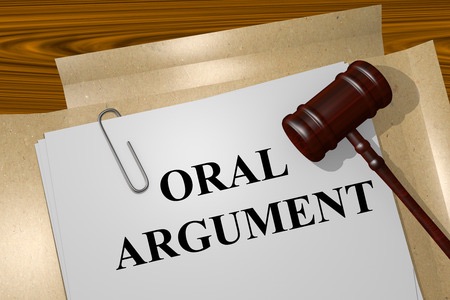“Despite the strong presumption in favor of judicial review, the Supreme Court justices questioned nullifying a final decision finding a patent invalid based on review of a decision to institute a time barred petition and a determination that the IPR proceeding should have never been instituted.” – Irena Royzman
 The Supreme Court heard oral arguments on Monday in Thryv, Inc. v. Click-to-Call Technologies. The case asks the nation’s highest court whether 35 U.S.C. § 314(d)—which states that decisions to institute inter partes review (IPR) proceedings shall not be appealable—permits appeals of PTAB institution decisions based upon 35 U.S.C. § 315(b)— which states that IPRs won’t be instituted if the patent owner served the petitioner with a complaint for patent infringement more than one year prior to the petition.
The Supreme Court heard oral arguments on Monday in Thryv, Inc. v. Click-to-Call Technologies. The case asks the nation’s highest court whether 35 U.S.C. § 314(d)—which states that decisions to institute inter partes review (IPR) proceedings shall not be appealable—permits appeals of PTAB institution decisions based upon 35 U.S.C. § 315(b)— which states that IPRs won’t be instituted if the patent owner served the petitioner with a complaint for patent infringement more than one year prior to the petition.
The U.S. Court of Appeals for the Federal Circuit ruled in August 2018 in a panel rehearing that the Patent Trial and Appeal Board (PTAB) had “committed legal error” in rendering its determination that an IPR petition challenging claims of Click-to-Call’s patent was not time-barred under Section 315(b). All 12 judges joined a footnote finding that the Section 315(b) time bar applies even when the earlier infringement action had been voluntarily dismissed without prejudice.
Here is what those who have reviewed the transcript of Monday’s oral arguments had to say:
 R. David Donoghue, Holland & Knight
R. David Donoghue, Holland & Knight
“The argument was heavily focused on two things: 1) whether the 314(d) language that the PTO Director’s institution decisions “under this section shall be final and nonappealable” is limited to the Section 314 analysis, in other words the substantive patent analysis; and 2) the implications and dangers of not allowing any review of the PTO Director’s decision. The Court spent considerable time on a hypothetical pointing out that making the decision non-appealable could allow a hypothetical PTO Director with an improper bias to use a time bar decision to avoid judicial scrutiny. Likely more importantly, much of the argument focused upon the statutory interpretation and how the Supreme Court’s Cuozzo analysis plays into this decision. Ultimately, it appeared that Justice Alito’s Cuozzo dissent, joined by Justice Sotomayor, has gained at least Justices Gorsuch and Kavanaugh. Additionally, at least Judges Ginsburg and Roberts also seemed to generally agree with the analysis. That would suggest that the Court is leaning heavily toward reading the Section 314(d) “final and nonappealable” requirement as limited to the substantive patent analysis required by Section 314, but excluding the time bar decision pursuant to Section 315(b).”
Irena Royzman , Kramer Levin
, Kramer Levin
“Although judicial review is essential to enforcing statutory limits and placing a check on ultra vires action, it is far from clear based on the oral argument that the Supreme Court will affirm the Federal Circuit in Thryv v. Click-to-Call. The Federal Circuit held that it could review whether an IPR petition was time barred and whether the IPR should have gone forward in the first instance on appeal of a final written decision. Despite the strong presumption in favor of judicial review, the justices questioned nullifying a final decision finding a patent invalid based on review of a decision to institute a time-barred petition and a determination that the IPR proceeding should have never been instituted. If the Court reverses the Federal Circuit, PTO decisions that disregard or violate the statutory time bar will be immune from judicial review.”
Karen Sebaski , Holwell Shuster & Goldberg LLP
, Holwell Shuster & Goldberg LLP
“During oral arguments, several justices focused on the real-world implications of a decision by the High Court that the Patent Office’s statutory power to institute IPRs is exempt from judicial review. Although, on the one hand, such a ruling would give the PTAB the final say over the decision of whether to institute a particular IPR petition, the potential impact of a contrary decision on the efficient and cost-effective nature of IPR proceedings was front and center. Several justices, including Justice Kagan, appeared skeptical that Congress would have intended to limit its ‘unappealability bar’ to ‘the substantive determination [of patentability] at the threshold stage.’ Justice Ginsburg, for example, commented that there was ‘something unseemly about nullifying the [PTAB’s] determination on the merits’ based on the time bar of §315(b) when another challenger simply could file a new IPR petition ‘where the Board has already made the decision that the patent is no good.’ I think that, against the backdrop of such potential implications, the Court’s decision is likely to focus on the plain language of 35 U.S.C. § 314(d).”

![[IPWatchdog Logo]](https://ipwatchdog.com/wp-content/themes/IPWatchdog%20-%202023/assets/images/temp/logo-small@2x.png)

![[Advertisement]](https://ipwatchdog.com/wp-content/uploads/2024/05/Quartz-IP-May-9-2024-sidebar-700x500-1.jpg)
![[Advertisement]](https://ipwatchdog.com/wp-content/uploads/2024/04/Patent-Litigation-Masters-2024-sidebar-last-chance-700x500-1.jpg)

![[Advertisement]](https://ipwatchdog.com/wp-content/uploads/2021/12/WEBINAR-336-x-280-px.png)
![[Advertisement]](https://ipwatchdog.com/wp-content/uploads/2021/12/2021-Patent-Practice-on-Demand-recorded-Feb-2021-336-x-280.jpg)
![[Advertisement]](https://ipwatchdog.com/wp-content/uploads/2021/12/Ad-4-The-Invent-Patent-System™.png)






Join the Discussion
One comment so far.
Jam
December 11, 2019 12:12 pmSeriously? 35 USC Chapter 31 Section 314(d) states “determination … under this section shall be final and nonappealable.” Did the statute say “under this chapter”? or “under this section and section 315″? It did not. Logic and the plain meaning of the statute does not allow for this farce. In other words, no, 314 does not preclude judicial branch review of an issue under 315.
Ginsburg: “[the] Board has already made the decision that the patent is no good [in this case, and] [t]here’s something unseemly about nullifying the determination on the merits [based on a mistake in the decision about whether to institute an IPR.]” No more unseemly than maliciously mischaracterizing or ignoring a statute to get the result you want.
Furthermore, 314(d) could also be interpreted as merely precluding the Director from inventing an appeal-like process within the agency. E.g., the “Director” determines to institute an appeal (i.e., a PTAB judge makes that determination) and then allows for a panel of judges to review that decision. In other words, the statute precludes the “Director” from reviewing the Director’s decision, but does not touch the right of a person to have an executive branch decision reviewed by the judicial branch.
To the extent that the judiciary has allowed other sections of other laws to preclude judicial branch review of executive branch decisions, isn’t that exactly “what we were fighting over at Yorktown”? (to quote Roberts from the transcript of Thryv). I.e., to prevent runaway executive and judicial branches that trample the rights of the citizenry by doing whatever they want without regard for the will of the people as expressed by the legislative branch?